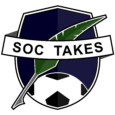USL League One, NISA and return of pro soccer to USSF Division III

Photo credit: Robbie Mehling/Soc Takes
The history of lower-division soccer in the United States is a rocky journey through a rotating door of clubs, acronym-heavy leagues and the aspiring saviors of U.S. Soccer who mastermind them.
As evidence, one needs only to look at two images sourced from the United States Soccer League System Wikipedia page. One details the history of leagues and teams at each level of the professional pyramid; the other contains relevant notes on that history.


Needless to say, outside of first-division Major League Soccer (MLS) — which consistently dates back to 1994 with steady growth outside of a small contraction in 2002 — there are a variety of bodies that have risen, fallen and rebranded in a quest to unify and control the vast opportunities present below the top-level league.
While the most oft-spoken chronicle of this battle takes place at the Division II level — largely between the various historical names of the current United Soccer League (USL) and the group of owners that splintered off of it in 2010 to form the North American Soccer League (NASL) — the modern battle for control heading into 2019 takes place on a different field: one tier lower in Division III.
While historically less contentious — with various arms of the USL the only real presence at the Division III level — 2019 brings a newfound competition, not unlike those from Division II, to the lowest tier of professional soccer in the U.S. From 1995-2016, the number of Division III clubs in various USL identities such as the USISL Professional League, USISL D3 Pro League, USL D3 Pro League, USL-2 and finally the USL itself, varied dramatically from as many as 55 to as few as six clubs, ebbing and flowing as it took a largely backseat role compared to the still nascent Division II efforts. After the USL was granted co-provisional Division II status alongside the NASL in 2017 — completing a rebuilding process that took place from 2011-16 in Division III — and the subsequent folding of the NASL at the conclusion of the 2017 season, no leagues occupied the now-vacant Division III space in 2017 or 2018.
With a clear gap and an increasingly localized focus on lower-division soccer, it wasn’t long before several potential suitors to filled the suddenly empty space. While rumors of a reunion of three of the biggest NASL clubs (NY Cosmos, Miami FC and Jacksonville Armada) have opted for an alternative route to the current pyramid (NPSL Pro, which will reportedly not seek sanctioning), two legitimate suitors have emerged within the current structure in the new Division III USL effort: USL League One and the National Independent Soccer Association (NISA).
While NISA has announced its first two clubs in recent days (New England and Philadelphia) — with a Midfield Press interview also revealing a potential San Diego-based club in 1904 FC — USL League One has revealed nearly its full slate of teams, expected to include 11 members for the league’s inaugural season.
#NISAUSA is heading to the City of Brotherly Love, with a new professional soccer club operating within the city of Philadelphia when the 2019/20 season kicks off next fall.
Read more at https://t.co/tQvbRZOKvQ pic.twitter.com/8RqMW5M3es— NISA Official (@NISALeague) October 18, 2018
Each league appears to be taking differing approaches when considering their founding members, with NISA’s largely coming from markets with current MLS franchises (New England and Philadlephia) or active expansion bids (San Diego), and USL League One’s coming from a variety of homes but largely filling unsatisfied, smaller markets that don’t match Division I or II requirements.
Several announced League One clubs come in the form of “B” or “2” teams for existing MLS clubs either dropping down from the Division II USL Championship (Toronto FC II and Orlando City B) or being freshly founded (rumored FC Dallas 2). Several others fill markets currently lacking a professional club, but with sizable populations and favorable soccer demographics (Greenville Triumph SC, Madison Pro Soccer, Chattanooga Red Wolves FC, rumored AS Roma Riverside). One 2019 club and two announced 2020 clubs are independent clubs from the USL Championship dropping down or returning from hiatus (Richmond Kickers, Rochester Rhinos, Penn FC).
The remaining clubs come from a far more interesting background that displays the potential for growth within the new United Soccer League pyramid. The final three 2019 clubs are former Premier Development League (PDL, now USL League Two) members who are making the leap from short-season, college-based amateur play into the professional pyramid. Included among those are Phoenix Rising FC affiliate FC Tucson, fellow 2018 PDL playoff club South Georgia Tormenta FC and the supposedly soon-to-be-announced Lansing Ignite (connected with Lansing United owner Jeremy Sampson).
It’s this latest group of teams that hints at the greatest promise within the USL’s latest foray into Division III — the ability for small-market clubs to develop and prove themselves at the amateur level in League Two before making the leap to professional play within League One and potentially the Championship in the future. Clubs like Tormenta FC can take a year or two to learn the ropes of running a club, building a connection with their fan-base, smoothing out operations and forming a functional foundation, before taking on the increased financial burden and expectations of a professional-level club.
(Editor’s note: Make sure to check out Part II of this story, a Q&A with Tormenta FC president Darin Van Tassell and vice president of soccer operations Mike Panter.)
Follow Colton on Twitter: @cjcoreschi.
Support Soc Takes on Patreon for access to exclusive content and supporter benefits. Click here to become a patron today.



